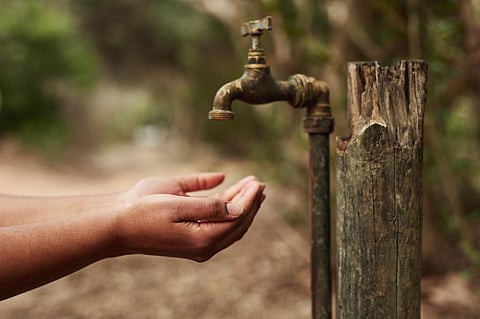Climate change: Delhi, Punjab and Haryana biggest hotspots of water loss in India
India continued to be the ‘top hotspot for terrestrial loss of water’, with some regions in northern India losing close to 9 centimeters on an average from 2002 to 2021, according to Down to Earth’s (DTE) analysis of the World Meteorological Organization’s (WMO) State of Climate Service report.
Terrestrial water loss (TWS) is the sum of all water on the land surface and in the sub-surface — which includes surface water, soil moisture, snow and ice and groundwater. Delhi, Punjab and Haryana, as well as parts of Rajasthan and Uttar Pradesh and northernmost regions, remained most prone to TWS.
Arunachal Pradesh as well as northern regions in Assam in the North East remained the most affected. These regions experienced around 2.5 cm of water loss on average. The coastal region of Tamil Nadu remained the most susceptible to water loss in the south.
According to the report: “Human- and naturally-induced stressors are increasingly adding pressure on water resources, which are a key pre-requisite for human development.”
TWS has been 1 cm on an average in the past two decades; in India, it has been 3 cm on an average. The situation is even more precarious considering only 0.5 per cent of water is usable and is freshwater.
As many as 2.3 billion people live in countries considered to be water-stressed; the number is going to be at least 5 billion by 2050, according to the report.
In India’s case, per capita water availability has been shrinking from 1,816 cubic meters in 2001 to 1,545 cubic meters in 2011. By 2031, water availability will be down to 1,367 cubic meters per person, according to the Union Ministry of Housing and Urban Affairs.
Already, five of the 21 river basins in India are absolutely water scarce, where per capita water availability is below 500 cubic meters, five are water scarce (per capita water availability is below 1,000 cubic meters) and three are water-stressed (per capita water availability is below 1,700 cubic meters), according to Falkenmark Water Stress Indicator.
By 2050, six will become absolute water scarce, five will be water scarce and four will be water stressed, according to State of India’s Environment 2020, a DTE publication based on the projections by Central Water Commission, India.
But not everything is doom and gloom in India as the graphic shows. Some regions — particularly western part of Madhya Pradesh, central Maharashtra and parts of Odisha and Andhra Pradesh — have gained terrestrial water in the range of 2.5-5 cm on average from 2002-2021.


